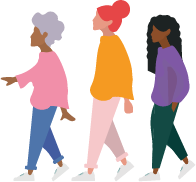What is violence against women?

There are a number of misconceptions surrounding violence against women, including how and why it occurs. We need to address these misconceptions to be successful in our responses to violence against women and their children.
What is violence against women?
Violence against women does not mean only physical violence. It is much broader and includes sexual, emotional, psychological and financial abuse. The National Plan targets two main types of violence against women – domestic and family violence, and sexual assault.
On an international level, the United Nations Declaration on the Elimination of Violence against Women provides the following definition:
‘The term violence against women means any act of gender-based violence that results in, or is likely to result in, physical, sexual or psychological harm or suffering to women, including threats of such acts, coercion or arbitrary deprivation of liberty, whether occurring in public or private life.’
The laws in each Australian state and territory have their own definitions. While there is no single definition, the central elements of domestic violence include:
- acts of violence that occur between people who have, or have had, an intimate relationship;
- an ongoing pattern of behaviour aimed at controlling a partner through fear, for example by using behaviour which is violent and threatening. In most cases, the violent behaviour is part of a range of tactics to exercise power and control over women and their children, and can be both criminal and non-criminal; and
- the threatening or violent behaviour can comprise of physical, sexual, emotional, psychological and financial abuse.
Physical violence can include slaps, shoves, hits, punches, pushes, being thrown down stairs or across the room, kicking, twisting of arms, choking, and being burnt or stabbed.
Psychological and emotional abuse can include a range of controlling behaviours such as control of finances, isolation from family and friends, continual humiliation, threats against children or being threatened with injury or death.
Financial or economic abuse includes forcibly controlling another person’s money or other assets. It can also involve stealing cash, not allowing a victim to take part in any financial decisions or preventing a victim from having a job.
Family violence is a broader term that refers to violence between family members, as well as violence between intimate partners. It involves the same sorts of behaviours as described for domestic violence. As with domestic violence, the National Plan recognises that although only some aspects of family violence are criminal offences, any behaviour that causes the victim to live in fear is unacceptable. The term ‘family violence’ is the most widely used term to identify the experiences of Aboriginal and Torres Strait Islander people, because it includes the broad range of marital and kinship relationships in which violence may occur.
Sexual assault or sexual violence can include rape, sexual assault with implements, being forced to watch or engage in pornography, enforced prostitution, and being made to have sex with friends of the perpetrator.
Research has demonstrated that violence against women often involves a continuum of violence from psychological, economic and emotional abuse through to physical and sexual violence.
What are the causes?
Many of the misconceptions surrounding violence again women centre on its causes. There are a number of myths that exist, such as:
- men can’t control their anger or sexual urges;
- alcohol causes men to be violent;
- women could leave violent partners if they wanted to; and
- men experience equal, if not greater, levels of violence perpetrated by their partners or former partners.
Research has shown that the significant drivers of violence against women include:
- the unequal distribution of power and resources between men and women; and
- an adherence to rigidly defined gender roles and identities i.e., what it means to be masculine and feminine.
Attitudes that condone or tolerate violence are recognised as playing a central role in shaping the way individuals, organisations and communities respond to violence. VicHealth has summarised five key categories of violence supportive attitudes that arise from research. These include attitudes that:
- justify violence against women, based on the notion that it is legitimate for a man to use violence against a woman;
- excuse violence by attributing it to external factors (such as stress) or proposing that men cannot be held fully responsible for violent behaviour (for example, because of anger or sexual urges);
- trivialise the impact of violence, based on the view that the impacts of violence are not serious or are not sufficiently serious to warrant action by women themselves, the community or public agencies;
- minimise violence by denying its seriousness, denying that it occurs or denying that certain behaviours are indeed violence at all; and
- shift blame for the violence from the perpetrator to the victim or hold women at least partially responsible for their victimisation or for preventing victimisation.
VicHealth has a number of useful publications and research that discuss current attitudes around violence against women.
